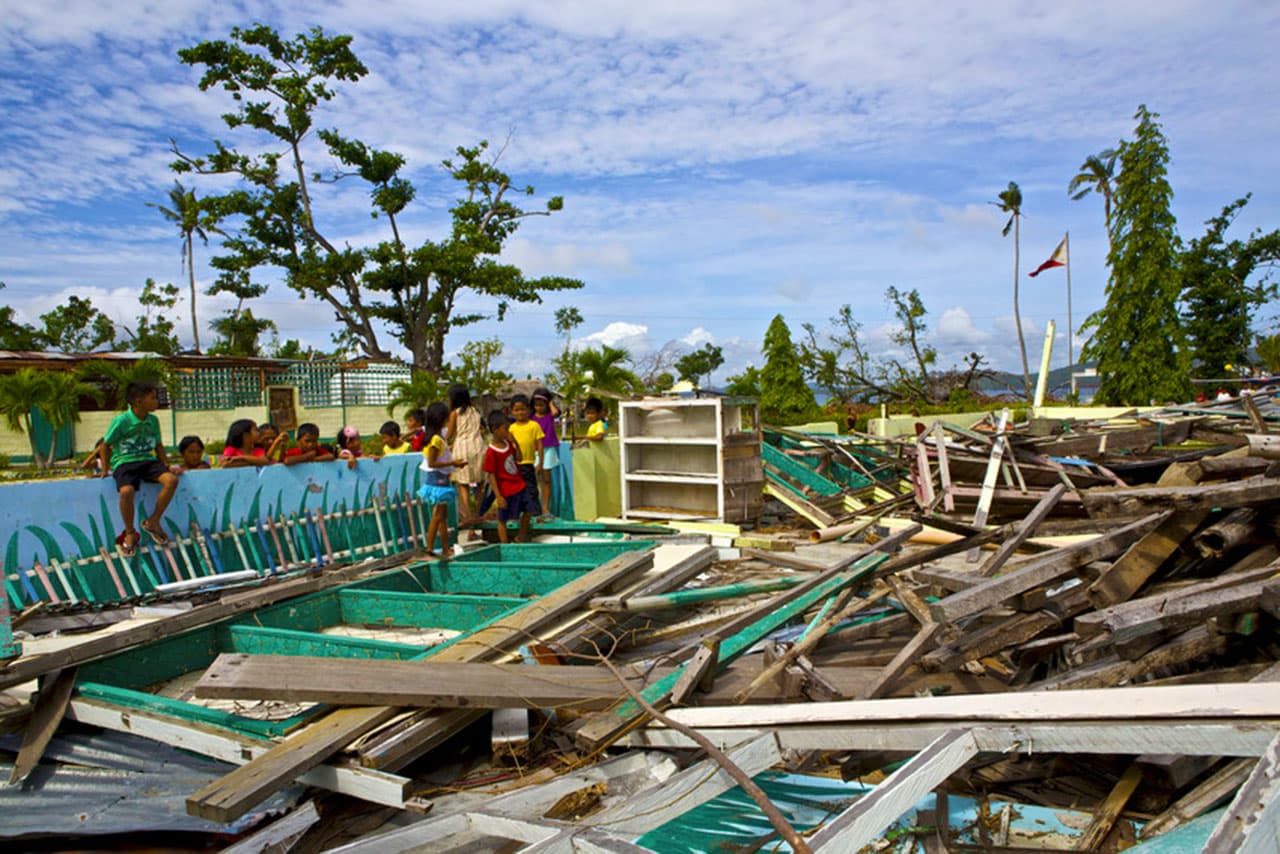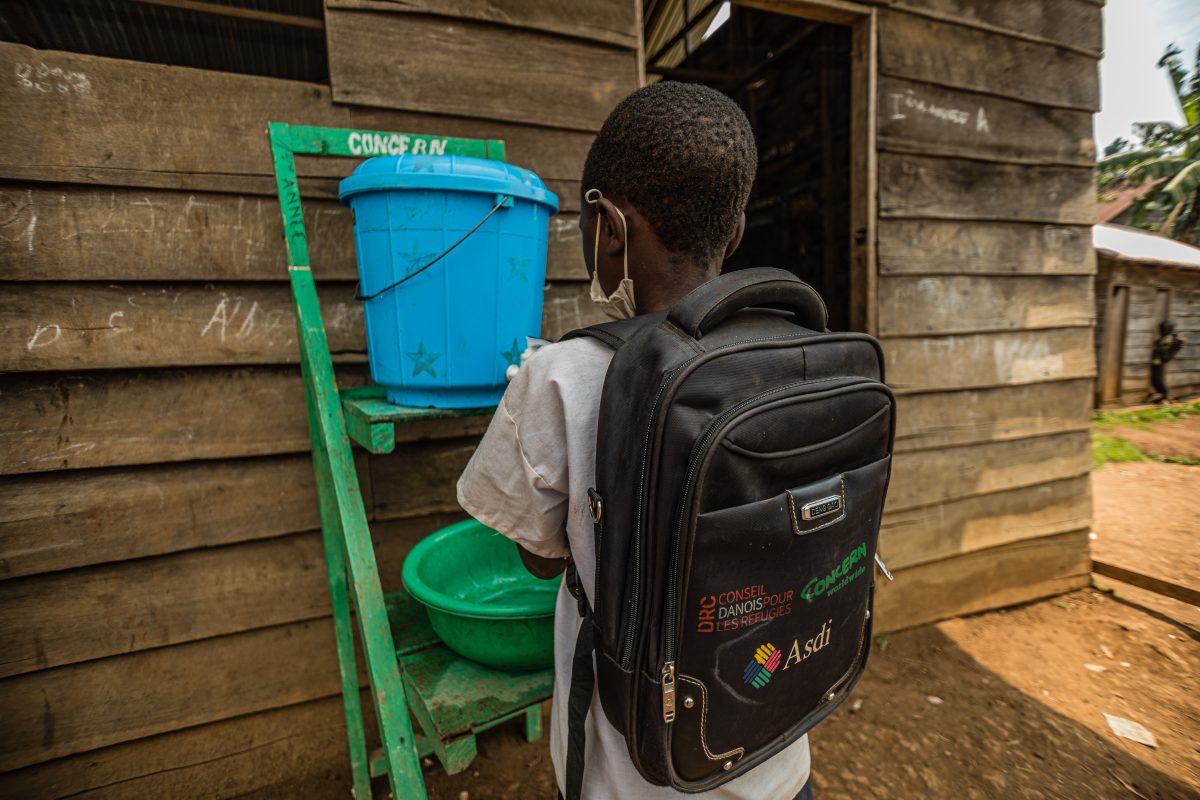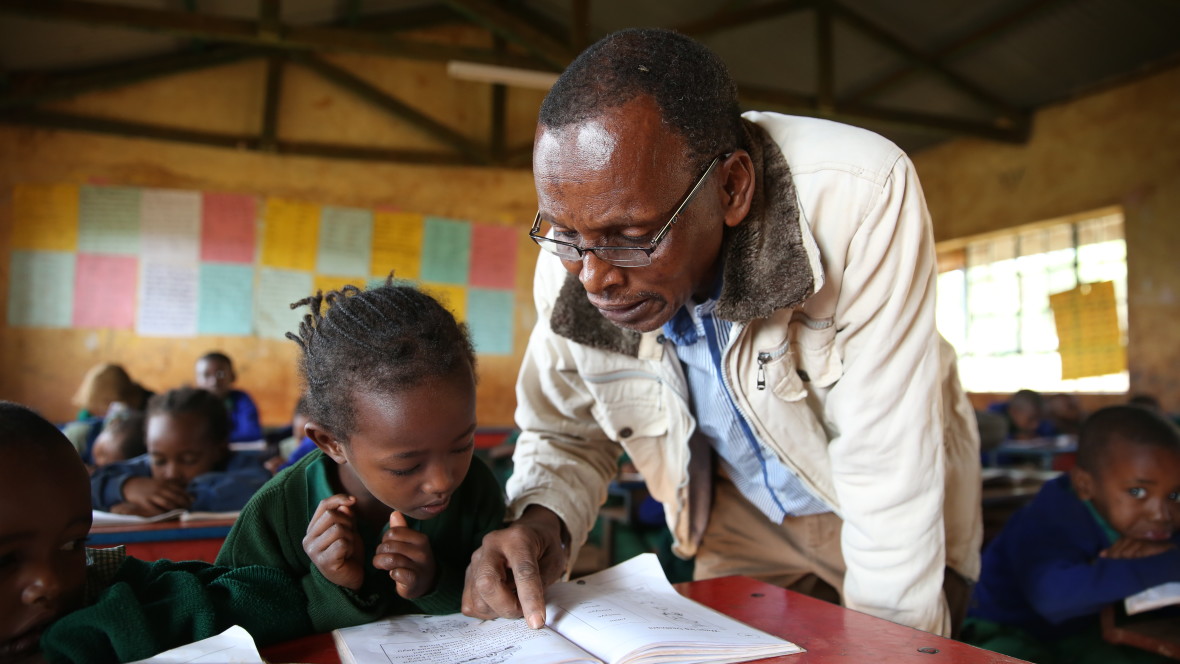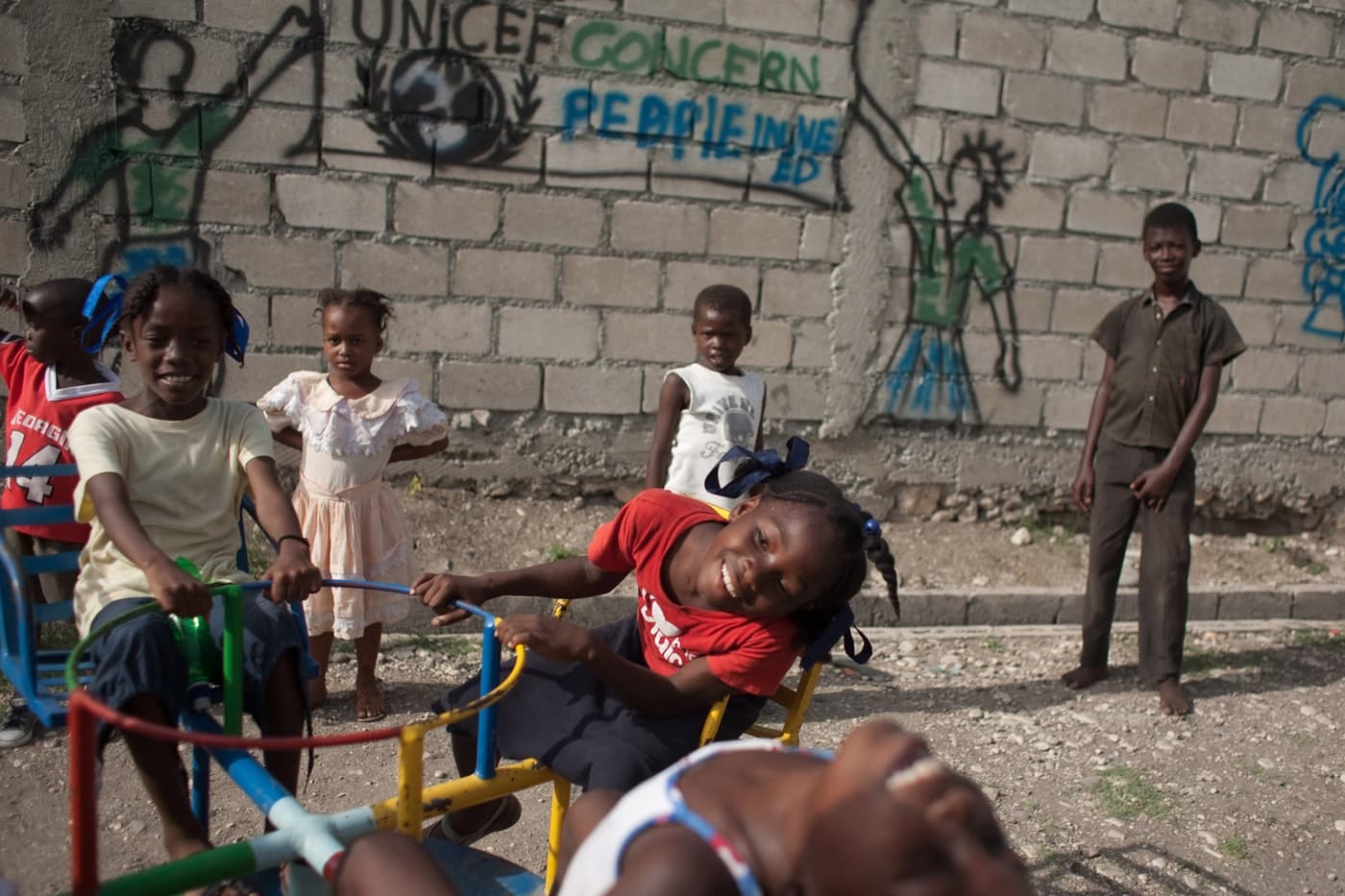News
Child marriage and education: The blackboard wins over the bridal altar
For girls, child marriage (aka forced marriage) means the end of an education. Here’s how a landmark ruling in Malawi is helping to keep girls in school.
Read MoreEducation is key to ending climate change — but climate change is also one of the biggest threats to education.
Climate change and poverty exist in a vicious cycle, especially for the most vulnerable people. The effects of climate change lead to food and water scarcity, lost livelihoods, increases in gender-based violence, and lower education levels. This last part is especially worrisome, as education is one of the greatest tools people have to escape the cycle of poverty. Last August, UNICEF reported that half of the world’s 2.2 billion children are at “extremely high risk” for climate change, including its impact on education. Here’s why.
When Typhoon Haiyan hit the Philippines in 2013, it destroyed over 90% of the schools in the central municipality of Concepcion. The schools that weren’t caught in the path of destruction were used as temporary shelters for families who had lost their homes.
This is one of two of the most visible and direct effects that climate change has on education, and it’s also the one that affects children at a large scale. Hundreds, if not thousands, of children in Concepcion missed at least three months of school in the wake of Haiyan. With the number of climate events increasing in frequency and scope each year, these interruptions to education are expected to increase as well. And, as we’ll see in this article, recovery from so much time lost in school is not as simple as getting kids back into the classroom. Some children never go back.

The relationship between climate change and hunger means that many children are primed to develop climate-related health issues long before they’re born (or even conceived). Malnutrition, either passed on from mother to child or experienced in the first two years of life is especially dangerous to a child’s health and development; a related effect of malnutrition, stunting, is linked to lower IQ scores — by as much as 11 points — and impaired brain development.
There are other health effects of climate change, many of which are primed to have a greater impact on younger generations. As Francis Vergunst (Université de Montréal) and Helen Louise Berry (University of Sydney) wrote last year, children are most vulnerable to diseases, heat exposure, dehydration, and other environmental toxins through their fifth birthday. These issues can delay “developmental milestones in areas such as cognition and language.”
But throughout their childhood, children on the frontlines of the climate crisis face health risks that could have a domino effect. Climate emergencies such as floods, cyclones, sea-level rises, zuds, and extreme high temperatures all pose higher risks to children’s health and safety. Events that affect WASH services can lead to waterborne diseases like cholera, dysentery, and diarrhea. The more “everyday” causes and effects of the climate crisis, such as increasing air pollution due to heavy urbanization, can lead to asthma and other chronic illnesses. All of these, either on their own or in combination, lead to higher absentee rates in school, especially as the most vulnerable children are generally not able to get immediate and quality healthcare.

The net effects of the climate crisis add up. An ongoing crisis in the Horn of Africa, for instance, has seen several years worth of failed rains and complicating the lives and livelihoods of millions of farmers and pastoralists across Ethiopia, Kenya, and Somalia. When families lose out on money, parents are often unable to pay school fees such as tuition, uniforms, and supplies. They may also need to pull their children out of school so that they can either help out at home or earn money to help the family. Or they may turn to child marriage in hopes of giving their child (most often a daughter) a chance for a better life with someone who can support them — and lower their own expenses. None of these are easy decisions to make; most parents would rather not have to make them at all. But these are the realities of the climate crisis, especially among the most affected people and in the most affected areas.
Sometimes, if a climate-related disaster hits, it’s the teachers who are most affected. In villages where there are only one or two instructors, a climate-related illness or injury will have the same effect as a school being destroyed.
Climate-related closures also threaten quality education. Even the most qualified teachers can struggle to catch their students up — whether some or all — who have missed out on school, especially if it’s a prolonged situation like Typhoon Haiyan. Much like the United States, there are often benchmarks in the countries hit hardest by climate change that are set by their ministries of education, and teachers are expected to meet those goals with their students. But a break in routine combined with a recovery from an illness or injury, or the trauma that children face after surviving a natural disaster, can make it hard to keep up — for both students and teachers.

Over 21.5 million climate refugees have been displaced due to global warming and related weather events. However, this phrase is a bit misleading: Unlike refugees recognized by the UNHCR, people forced to migrate due to climate often remain within the borders of their home country, and are offered fewer rights and protections. This includes access to education.
In their research, Vergunst and Berry also focus on the mental toll that the climate crisis is having on children. Between the ages of 6 and 12, children start to better understand climate change and both the current and anticipated impacts. “This heightens their capacity to experience stress and anxiety about the consequences of living on a warming planet,” write Vergunst and Berry, signaling that the youngest generations are those also most likely to experience the most acute and longest psychological toll of consistently anticipating the worst.
As children become teenagers, they typically experience greater stress as their social worlds and bodies change, and many people who develop disorders such as anxiety or depression do so at this time. “Climate change is turning up the heat on this pressure-cooker life stage by increasing the frequency, intensity and duration of weather-related stressors such as drought, heat waves, cyclones and floods,” write Vergunst and Berry. “Exposure to such events is linked to increased risk of PTSD, anxiety and depression, which compromise long-term mental health resilience.” This can be exacerbated by other physical effects of climate change, such as disrupted sleep due to a heat wave, and such factors “can impede the healthy transition to adulthood and damage long-term social and economic prospects.”
Education is one of the best tools for ending poverty. According to UNESCO, if all students in low-income countries had just basic reading skills (nothing else), an estimated 171 million people could escape extreme poverty. If all adults completed secondary education, we could cut the global poverty rate by more than half. However, the effects of climate change on the education systems of many low-income countries mean that these goals may become further out of reach, fueling an intergenerational cycle of poverty.

Concern’s work is grounded in the belief that all children have a right to a quality education. We have brought quality education to villages that are off the grid, engaged local community leaders to find solutions to keep girls in school, and provided mentorship and training for teachers.
Education in emergencies is a specialty of Concern’s (although we also incorporate it into our development work). We also adapt our programs to fit the needs brought on by both the “day-to-day” effects of climate change, as well as climate-related disasters. In the wake of Typhoon Haiyan, we built temporary schools so children could continue their education. When infrastructure or the logistics of a disaster prevent children from getting to the classroom, we bring the classroom to them via radio lessons. Last year, our work to promote education for all reached over 2 million children.